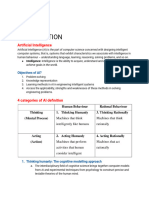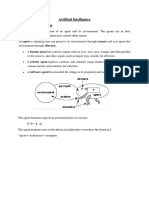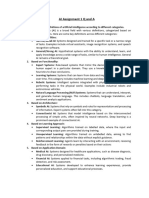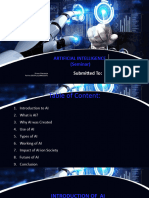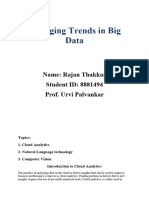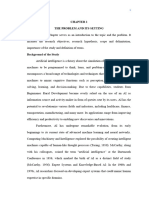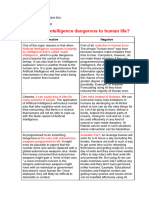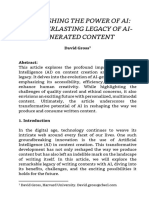0% found this document useful (0 votes)
29 views8 pagesAI Assignment 1
Artificial Intelligence (AI) is the science of creating intelligent machines and encompasses various techniques like machine learning and natural language processing. AI has applications in healthcare, finance, transportation, customer service, and education, among others, and has evolved through historical phases of optimism, AI winters, and a current focus on machine learning and ethical considerations. The relationship between agents and their environments is crucial, with different types of agents, such as reflex, model-based, goal-based, utility-based, and learning agents, each having unique characteristics and capabilities.
Uploaded by
utkarshingule54Copyright
© © All Rights Reserved
We take content rights seriously. If you suspect this is your content, claim it here.
Available Formats
Download as PDF, TXT or read online on Scribd
0% found this document useful (0 votes)
29 views8 pagesAI Assignment 1
Artificial Intelligence (AI) is the science of creating intelligent machines and encompasses various techniques like machine learning and natural language processing. AI has applications in healthcare, finance, transportation, customer service, and education, among others, and has evolved through historical phases of optimism, AI winters, and a current focus on machine learning and ethical considerations. The relationship between agents and their environments is crucial, with different types of agents, such as reflex, model-based, goal-based, utility-based, and learning agents, each having unique characteristics and capabilities.
Uploaded by
utkarshingule54Copyright
© © All Rights Reserved
We take content rights seriously. If you suspect this is your content, claim it here.
Available Formats
Download as PDF, TXT or read online on Scribd
/ 8











